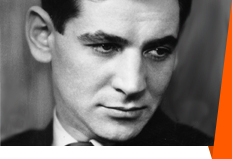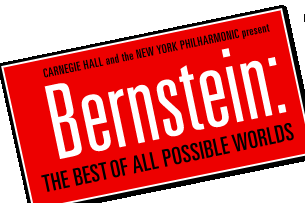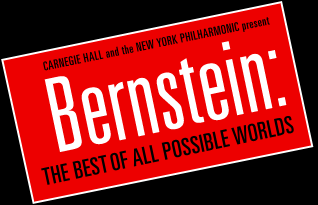
THE EDUCATOR
- Leonard Bernstein
- Stage & Film
- Concert Music
- The Conductor
- The Educator
- Bernstein’s New York
- Bernstein and Faith
- The Social Activist
- Bernstein and the New York Philharmonic
- Bernstein Memory Bank
- Bernstein Timeline
Televisions and Teachers
That television and Leonard Bernstein came of age at roughly the same time was a fortunate coincidence for classical music. As many of his friends and family have observed, Bernstein was a natural and gifted teacher, capable of conveying a special blend of exuberant emotion and careful analysis that people found irresistible. Television brought his intensity and enthusiasm into people’s living rooms, allowing Bernstein to share his musical teachings with countless people all over America who never would have been able to experience them in person.
The state of television today makes it seem improbable that there was once a wildly popular and nationally broadcast program devoted exclusively to fairly sophisticated explanations of classical (and some popular) music. Many people in television in the 1950s saw the medium’s potential as an instrument of education, which helped make Bernstein’s Young People’s Concerts possible—but it was his captivating charisma as a teacher that made the show popular and enabled it to endure.
Bernstein got his start on television on a program titled Omnibus (meaning “for all, for everyone” in Latin) offering hour-long segments on the sciences, arts, and humanities. Perhaps most memorable of Bernstein’s seven lectures on Omnibus was an exploration of Beethoven’s Fifth Symphony, in which a giant score of the opening bars of the first movement was painted on the floor of the studio. With this vivid visual aid, Bernstein led the audience through an examination of Beethoven’s creative process, studying discarded drafts of the symphony’s opening and trying to surmise why Beethoven settled on his final version.

Bernstein at a rehearsal for a CBS Omnibus program, ca. 1960.
Photo by Bert Bial, courtesy of New York Philharmonic Archives.
With the New York Philharmonic, Bernstein led 53 televised young people’s concerts between 1958 and 1972. He would often begin a program with a provocative question—“What makes American music sound American?” or “What is a conductor?”—and devoted each concert to finding an answer. Using the orchestra and piano to demonstrate his examples, Bernstein’s programs perfected the art of the concert-lecture.
The young people’s concerts covered a great range of topics, from the conventions of American musical theater to the structure of jazz. Though Bernstein’s programs were intended for children, he rarely simplified his content. As Pulitzer Prize–winning critic Tim Page once wrote, “It is startling to realize that Bernstein presumes a greater musical knowledge on the part of his children than most critics would presume from their grown readers in the 21st century.”
Though his televised concerts were his most visible work as an educator, Bernstein also mentored many young musicians and conductors at the Tanglewood Music Festival, in the New York Philharmonic, and across the country and around the world—including two of the most lauded American conductors working today, Marin Alsop and Michael Tilson-Thomas. The conductors lead their respective orchestras—Alsop with the Baltimore Symphony Orchestra and Tilson Thomas with the San Francisco Symphony—as part of Bernstein: The Best of All Possible Worlds.
© 2001–2008 Carnegie Hall Corporation
- Home
- |
- Multimedia
- |
- Press
- |
- Partners
- |
- Supporters





